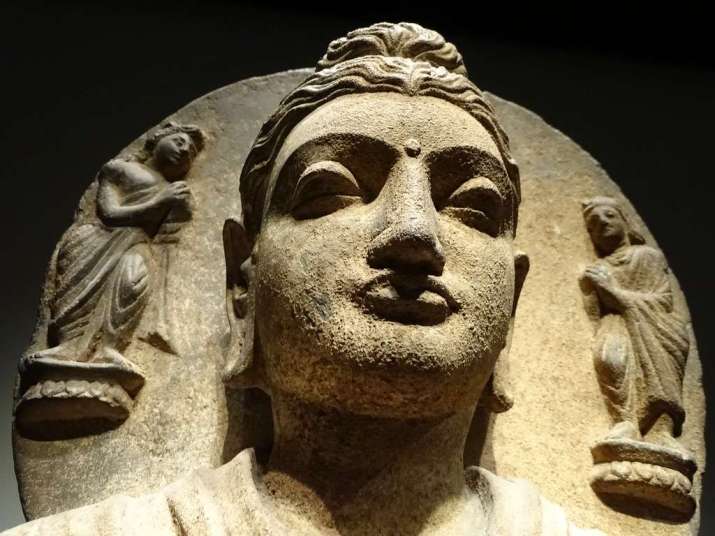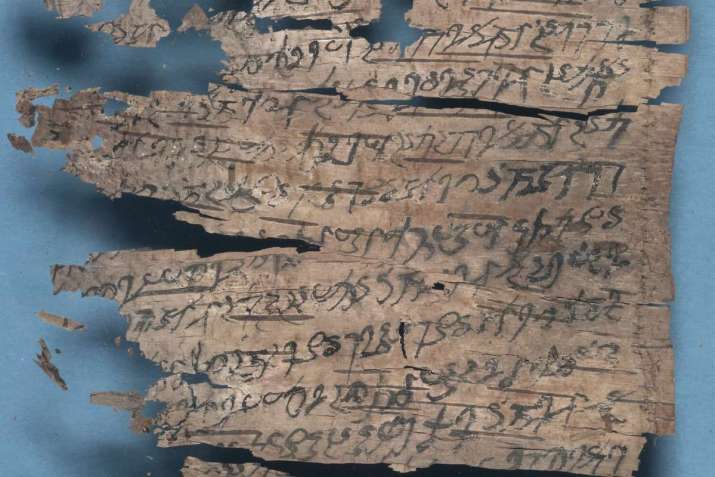FEATURES|THEMES|Commentary
Buddhistdoor View: Respectful Scholarship – Moving Forward and Learning from the Past
 Seated Buddha, Gandhara, Pakistan, 2nd-3rd century CE at Tokyo National Museum. From flickr.com
Seated Buddha, Gandhara, Pakistan, 2nd-3rd century CE at Tokyo National Museum. From flickr.comThe list of stolen objects due to imperialism and colonialism is unsettlingly long. The Elgin Marbles, taken from Greece, and the Rosetta Stone, taken from Egypt, are two of many such items. In recent years, a mixture of moral concern, nationalism, and diplomatic interests have led to efforts to repatriate these items to their countries of origin, such as the 12 bronze animal zodiac heads of the Old Summer Palace’s Haiyan Hall—seven of which have been returned to China.
There must be room for nuances in such emotionally and politically charged endeavors. Whether they were discovered, sold, or looted, a case can always be made for an item’s retention in its present location from a legal perspective. Nevertheless, what is debatably legal may not necessarily be ethical or moral, nor is it politically or culturally acceptable in the 21st century. Universities, museums, and other institutions should not deny the repatriation of objects to legitimate claimants. But Prof. Nigel Biggar, leader of Oxford’s Ethics and Empire project, cautioned: “Are today’s claimants really the heirs of yesterday’s victims? What, exactly, do contemporary Greeks have in common with ancient Athenians, such that the former can claim to be the rightful owners of the Elgin Marbles?” he said. “Where these questions can be given satisfactory answers, the restoration of objects makes sense.” (The Week)
Nevertheless, a “soft” form of colonial attitudes toward artifacts persists. A recent seizure of Buddhist scrolls brings a contemporary, tech-savvy twist to this ethical, legal, and political dilemma. In February, The Sydney Morning Herald reported that the University of Sydney had suspended a crowdfunding campaign by senior lecturer in South Asian Buddhist Studies, Dr. Mark Allon, to raise US$30,000 to bring two fragile bark manuscripts to Australia for study. His campaign began in 2019 and by 2021, the campaign had raised US$26,000. He smuggled them into Australia from Pakistan without clearing customs, and in Pakistan it is illegal to smuggle antiquities out of the country.
After the manuscripts arrived in Sydney, concerns were raised about the holy scriptures’ provenance and the ethics of studying antiquities from the black market, with The Sydney Morning Herald reporting that archaeologists were deeply alarmed that the scrolls had found their way to Australia: “Even Sydney University, after allowing its crowdfunding page to be used to raise the tax-deductible donations, has admonished Allon.” (The Sydney Morning Herald)
The university’s statement claimed that Allon had “made an error of judgment,” indirectly conceding that the university had not vetted his purpose thoroughly enough, nor considered the implications of his success. This has been acknowledged by the university itself elsewhere. (The Sydney Morning Herald)
The manuscripts are admittedly incredible. They are from an unknown cave in what was once Gandhara, and they very likely provide a glimpse into ancient forms of Buddhism that have been shrouded in mystery. Translating them will allow Dr. Allon to contribute an invaluable piece to the puzzle of ancient Buddhism. In May 2019, speaking on ABC RN’s Soul Search program, Dr. Allon noted that the Gandharan scrolls were among the oldest Indian manuscripts. Declaring them “the find of the century,” Dr. Allon claimed that these manuscripts pre-date all other known Buddhist texts by many centuries: “They throw a lot of light on the history of Buddhism . . . taking us very close to the Buddha.” (Soul Search)
 From sydney.edu.au
From sydney.edu.auIt is not disputed that their priceless heritage and risk of decay or destruction was Dr. Allon’s motivation for whisking them away from the black market. He responded to the suspension of his campaign: “If I hadn’t acted, they would have been destroyed. I should have got certification to bring them into Australia and conserve them [but] that was, under the circumstances, extremely difficult. . . . How could I get a certification from an owner who had bought them off the antiquities [black] market? . . . The only other alternative would be not to have got involved at all and to have left them and never seen them again. They just would have disintegrated. We’d never have knowledge of these extremely important manuscripts.” (The Sydney Morning Herald)
His argument for smuggling/saving the scrolls sounds similar to the “pro-theft” idea that artifacts of global significance may be safest in the relatively well-protected environments of Western cities. Even if that were true, it does not hold up as a legal argument. As any crime or civil lawyer knows, to take or seize an illegally acquired item—including on the black market—can be classed as possession or handling of stolen goods. Oxford University archaeologist and black markets specialist Neil Brodie made a similar point: “The presumption can only be the manuscripts were stolen or looted and trafficked in contravention of international law for the benefit of criminal networks. . . . It is scandalous to see the Australian public being asked to support such research. No account of legitimate trade and ownership is provided.” (The Sydney Morning Herald)
University of NSW associate professor of law Lucas Lixinski said that the fact that the scrolls were not cleared by customs already makes their transport illegal: “The person who brought them in will have broken the law twice—in not procuring an export certificate from the country they took them out of and also not clearing those manuscripts through customs in Australia.” (The Sydney Morning Herald)
Finally, the black market only exists if collectors acquire the antiquities, with the purchase and research of the items legitimizing and making them more attractive. Excavators are certainly desecrating the sites, but in many cases like the Gandharan scrolls, the fragments have survived but their trail to their original site, which is of infinite value, has been lost forever.
Dr. Allon’s argument is plausibly based on a specific conception of artifacts that, taken to a logical extreme, allow for all artifacts to be smuggled in the name of saving them. Tess Davis, a lawyer with the Washington, DC-based Antiquities Coalition, told The Guardian: “Colonialism is alive and well in the art world. So-called leaders in the field still justify retaining plunder in order to fill their ‘universal museums’ where patrons can view encyclopedic collections from all over the world. A noble idea, in theory, but in practice, a Western luxury. The citizens of New York, London, and Paris may benefit, but those of Phnom Penh? Never.” (The Week) Davis’ argument shares common ground with French president Emanuel Macron, who noted about a 2018 restitution report: “I cannot accept that a large part of the cultural heritage of several African countries is in France. There are historical explanations for this but there is no valid, lasting, and unconditional justification.” (Ministry of Culture, France)
The situation of the Gandhara scrolls mirrors their predecessors of dubious provenance, including scrolls extracted from the Library Cave in Dunhuang, China, by Paul Pelliot, Aurel Stein, and others. Despite the almost certain illegality of Dr. Allon’s requisition of the scrolls, the question is what to do with them now. A shadow of guilt and embarrassment hangs over entire fields that deal in antiquities or artifacts imported from elsewhere. Humanities fields such as history, and interdisciplinary communities like archaeology or anthropology, have been major beneficiaries of dubiously acquired items over the past two centuries. Dr. Allon’s case is even more complex, as he has smuggled these items in our lifetime, not in the 19th century. A new and invaluable insight into the misty origins of Buddhism will once more be based on a troubled and contested act.
Is this yet another find to be added to the collection of “illegal but worth it?” Does it set a precedent for international smuggling justified by research and preservation? Scholars and curators rightly profess that they work in the name of public service for the human story. But do many of them appreciate that their professional flourishing is often dependent on what was fundamentally not theirs, but now happen to be, whether through active intention or historical accident?
See more
Should the UK return colonial artefacts? (The Week)
Academic tussle as ancient relics from black market brought into country (The Sydney Morning Herald)
The Restitution of African Cultural Heritage. Toward a New Relational Ethics (Ministry of Culture, France)
Related features from Buddhistdoor Global
Researchers Uncover Hidden History in China’s Ancient Dunhuang Caves
Mysterious Giant Buddha Statue Discovered in Chongqing, China
Core of Culture Announces Mudra and the Diamond Spheres Free Online Lecture Series
Rare 19th Century Buddhist Painting Returns to Korea from the UK
Related news from Buddhistdoor Global
Ethics Complaint about Gandharan Manuscripts Leads to Admonishment of Australian Academic
Archaeologists Unearth Ancient Buddhist Complex in Pakistan
Archaeologists in India Discover Earliest Known Female-Led Monastery














